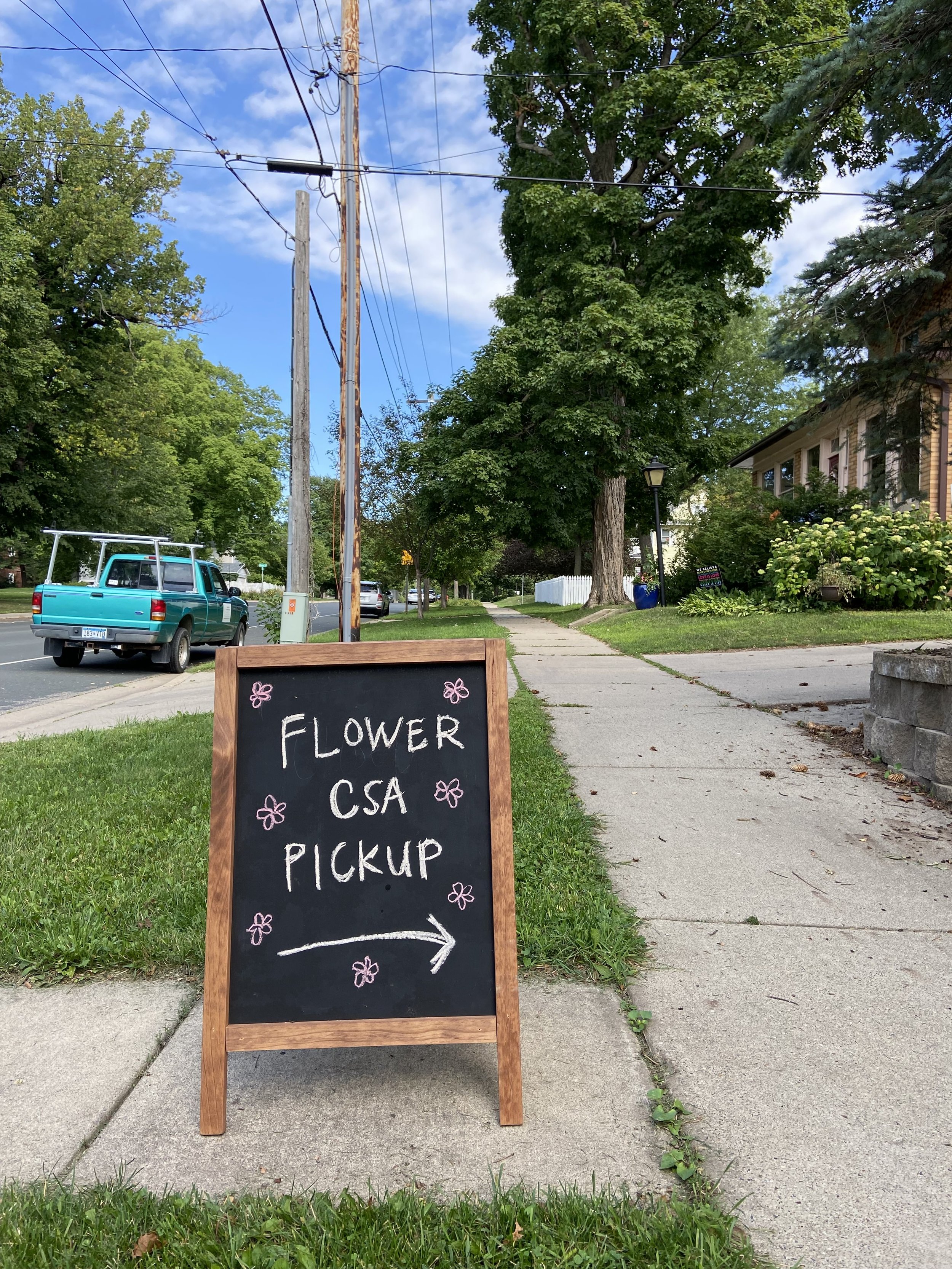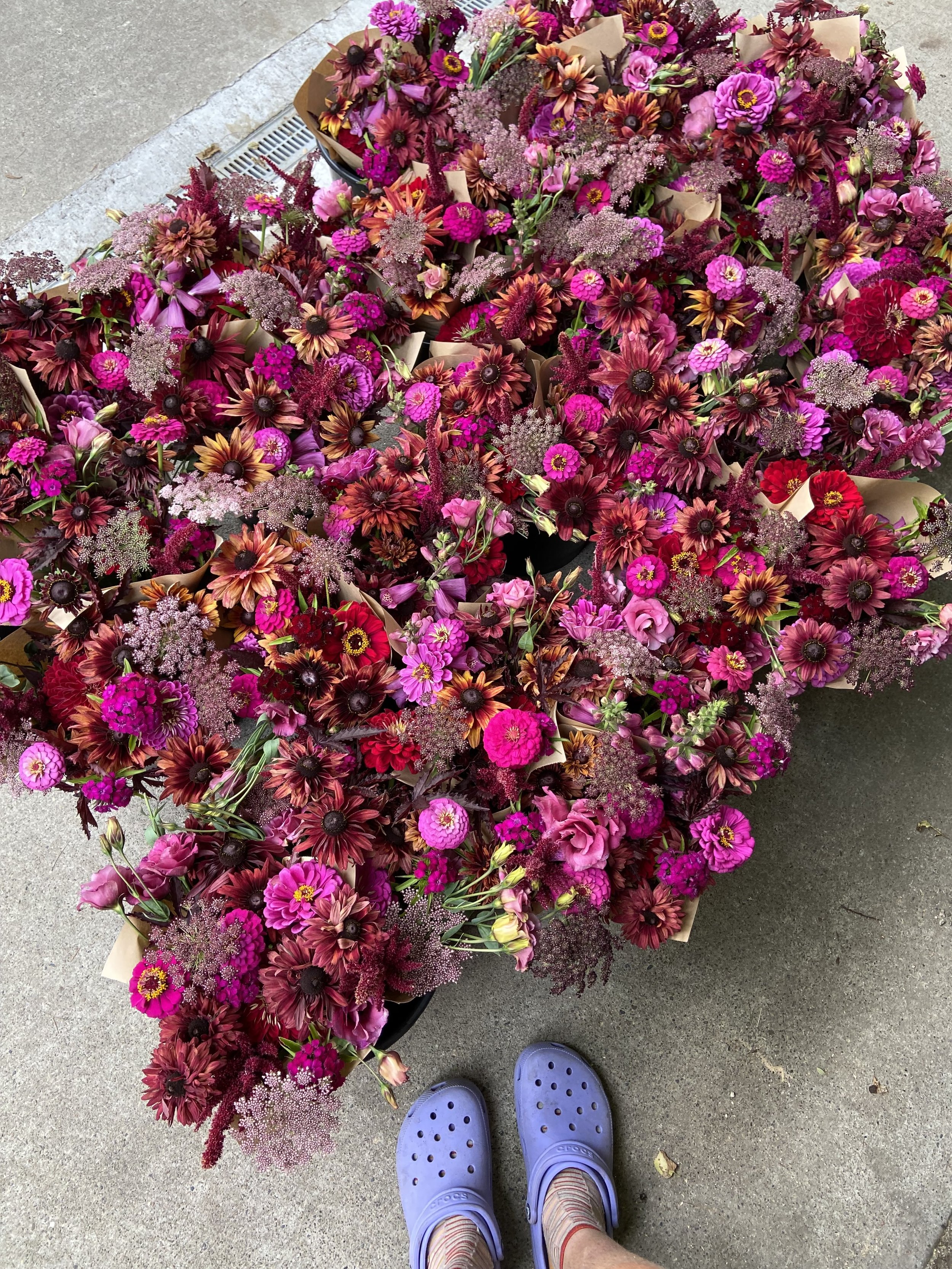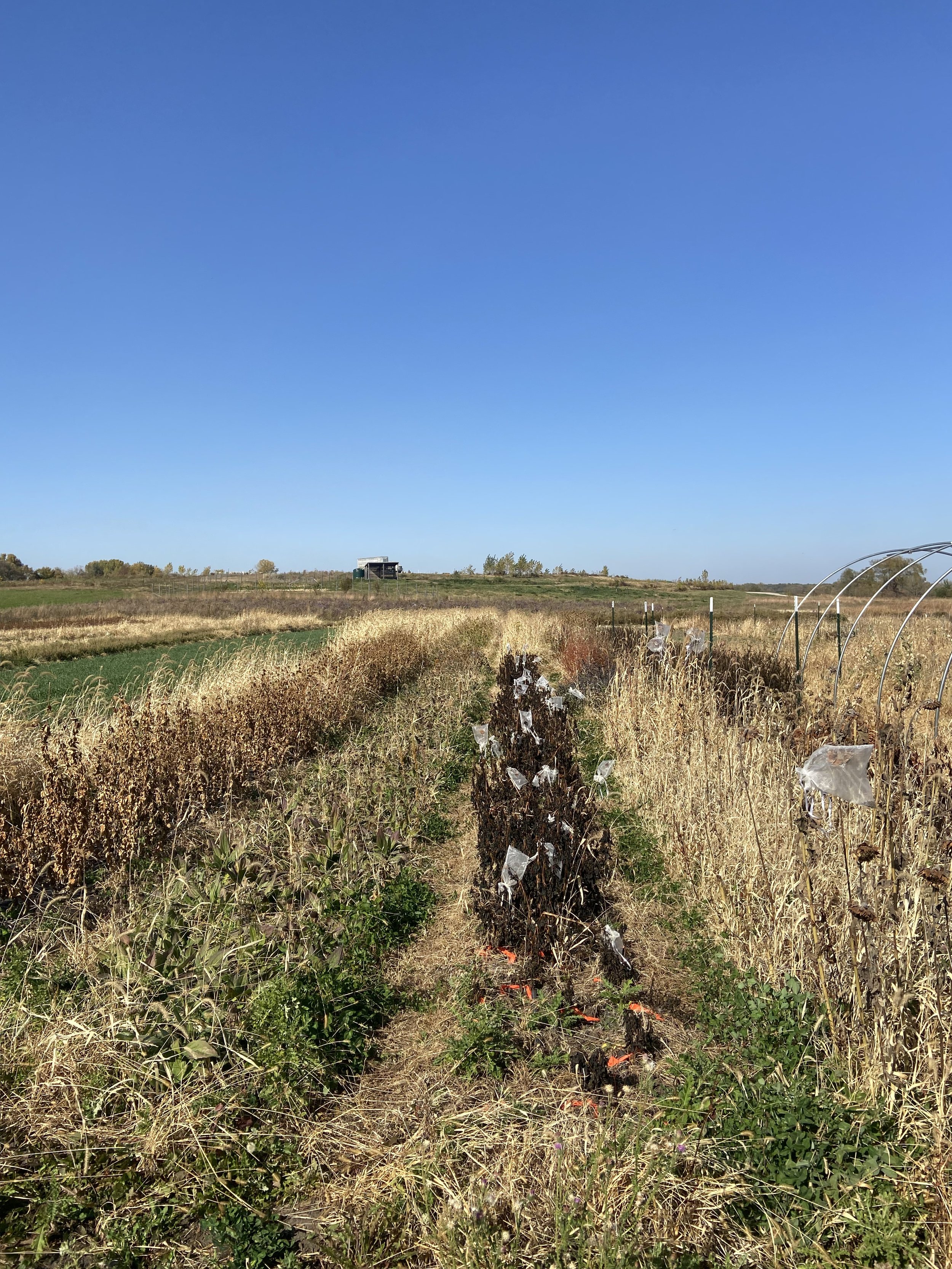A Day in the Life: flower farming
I am lucky enough to have two dream jobs: designing beautiful florals for weddings + deliveries, and tending a flower farm that produces blooms for a weekly bouquet subscription service (CSA). These jobs are quite different from each other at times. When I’m in farm mode I’m likely covered in more dirt than the average 3 year old, and I somehow manage to clean up and look presentable by the time I execute a wedding later in the same week. Both jobs require lots of detailed planning and logistics, as well as plenty of creative problem solving. Follow along as I chat through an average day on the farm throughout the season.
All year long I am awake when the sun is up. This means that in the summer when the sun rises before 6am, I rise too. And I love it! I slip silently out of bed, grab a little breakfast and the iced coffee I made myself the day before, and I’m off to the farm. Walking between beds, listening to the early morning birdsong, and watching the sun come up over the trees is one of my happy places. Bonus points for Monday mornings at the farm, because it is simply the best way to start the week.
May and June are all about preparing the soil and transplanting seedlings I’ve started in my basement “greenhouse.” This could involve any number of tasks: broadforking or tilling the soil, spreading compost, rolling out drip irrigation lines or landscape fabric, or planting seedlings or seeds into the soil. In fact, a day in early summer usually involves a combination of many of these tasks. There is plenty of squatting up and down, scooting down the aisles between beds on hands and knees, and getting my steps in walking up and down the field. The bulk of the physical work on a farm happens during planting in the spring and clean up in the fall, so during those times I typically work until my body tells me it’s done for the day. When I am able, I schedule more physically demanding tasks for the morning and easier (sometimes off-farm) tasks for the afternoon. Some of these easier tasks include pounding in T posts and trellising flowers that need extra support, more seeding in the “greenhouse,” and computer work.
July through September are all about harvesting. Since I grow all annual plants, most things don’t starting blooming until July. Once the flowers start blooming in full swing, I harvest on Monday mornings for the CSA and anything I need for any weddings we have booked that week. I walk through the field and note which flowers look the best, create a cohesive color palette, and figure out how many stems of each flower I need to create the week’s CSA bouquets. I am typically able to harvest all the flowers I need in the morning, after which I load up the buckets in my car and drive back home, where I transfer everything to the walk-in cooler in my studio. In July I may return to the farm after lunch to weed (an endless task until the plants are big enough to out-compete the weeds) while listening to an audiobook or podcasts. Since August and September are our busiest weddings months, I will often be working on the computer more than out in the fields during these months, communicating with couples, finalizing flower orders, and making sure I have all the supplies I need.
October and November typically bring more rest. The sun comes up later in the day, which means I sleep in a little too. The transition to fall is an especially lovely time at the farm: I switch to hot coffee. Trumpeter swans and geese start heading south. I relish in wearing a sweatshirt to the farm on chilly mornings, even if I have to take it off an hour into the day. Depending on when the first frost happens, which decimates almost all the flowers growing in the field, October can be a month of continued harvesting or mostly cleaning up the farm. Clean up involves cutting down or pulling out all the plants we so tenderly planted back in May and June, removing drip irrigation and landscape fabric, and digging up dahlia tubers to store over the winter. One of my favorite fall tasks is planting tulip bulbs—not because I love digging the trenches we plant them in (it’s actually one of my least favorite tasks) but because they are some of the first things to bloom in the spring. I love knowing that the cold, dark upcoming winter will end in a blooming riot of color from those special bulbs.
After fall clean up is done, farm work moves indoors for the winter. I take plenty of rest, and then start preparing for the upcoming season. I note systems that need improving, dream up new ways of optimizing yearly tasks, plan out which plants to grow and how many of each, inevitably order way too many seeds, and make a seeding plan so I know when I can start the whole process over again in February. By the time May rolls around and I’ve been seeding indoors for three months, I am itching to rise with the sun and get my hands in the dirt again.












